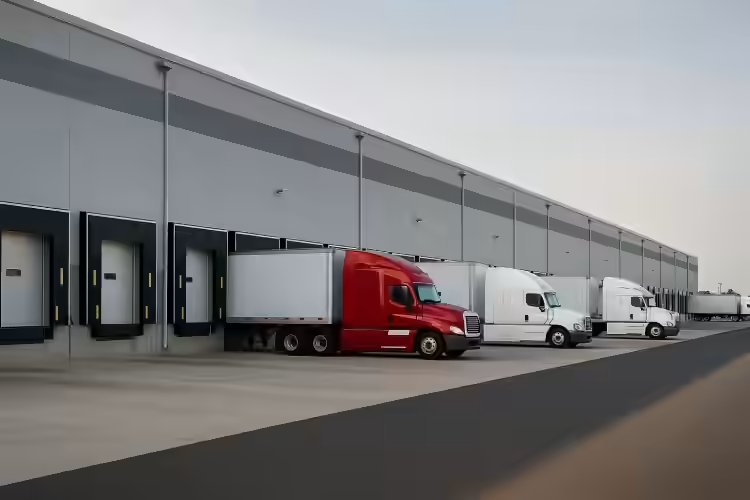How Your Warehouse Lease Affects Delivery Times
When people talk about improving delivery times, they usually focus on route optimization software, hiring faster drivers, or stacking more inventory. All solid ideas. But there’s one element that gets overlooked way too often: your warehouse lease.
Wait—what? Yep. That stack of paperwork you signed last year (maybe without reading every line) could be silently slowing down your logistics like an anchor. Let’s break down exactly how.
Location, Location… Logistics?
Let’s start with the obvious but often underappreciated factor—where your warehouse sits on the map.
It’s not just about being “close to your customers.” That’s true, but there’s more nuance. Are you near major interstates? Is there direct access to rail lines or ports? How about proximity to distribution hubs like those in Fontana, California or Atlanta, Georgia? Those spots are hot for a reason—they shave hours, even days, off delivery cycles.
Example: A 3PL operating in Dallas, Texas once switched from a warehouse 45 minutes outside the city to one just 10 minutes from I-35. Their average outbound shipment time dropped by 22%. Why? Drivers weren’t sitting in traffic or zigzagging through rural roads anymore.
The takeaway? A cheaper warehouse an hour away might cost you way more in delivery delays, fuel, and driver overtime.
24/7 Access vs. Time-Windows
Ever thought about what hours you can actually access your leased space? If your lease restricts operating hours, or if the landlord locks up after 6 PM, that’s a problem—especially in today’s round-the-clock delivery world.
Imagine this: Your drivers are ready to load at 5 AM to make early morning deliveries, but the warehouse opens at 7 AM. You’ve already lost the early delivery window, which customers increasingly expect. That's not a delivery problem—that's a lease problem.
Look for leases that offer:
- 24/7 building access
- Security systems that don’t require onsite guards for entry
- Enough lighting and safety for off-hour operations
And if you’re operating in a high-demand area like Chicago, Illinois or Miami, Florida, flexible access is gold.
Yard Space, Loading Docks, and Traffic Flow
Ever played Tetris in a poorly designed warehouse lot? Not fun. And a huge time-waster.
The actual layout and specs of your warehouse lease directly affect how fast you can move goods in and out. Some key features to pay attention to:
Dock Doors
More dock doors = more simultaneous loading/unloading = faster cycle times. Period.
Yard Space
Do trucks have enough space to maneuver, park, or queue without causing bottlenecks? Or are they clogging up your only access point? This matters a ton for fleets doing multiple turns per day.
Traffic Flow
One-way traffic flow inside the lot can prevent chaos. Double lanes, signage, and clear pathing help avoid truck pile-ups that can delay operations by hours.
Pro tip: Next time you tour a warehouse, don’t just look at the inside—watch how trucks move around the building.
Lease Terms That Stall or Speed You Up
Here’s where it gets sneaky. The fine print of your lease agreement can bake in logistical friction.
Restricted Use Clauses
Some leases restrict the kind of operations allowed onsite. If your lease says “no overnight parking” or “no cross-docking,” guess what—you just lost two huge time-saving options.
Who Handles Repairs?
If the landlord takes weeks to fix busted loading dock doors or potholes in the lot, your deliveries are in limbo. Make sure there are clear SLAs (service level agreements) for repairs.
Co-Tenant Conflicts
In multi-tenant industrial parks, your neighbors matter. If your neighbor’s trucks are blocking your loading bays every morning, that’s downtime you didn’t plan for.
Clarify how shared spaces are used and maintained before you sign. Better yet, negotiate designated zones.
Planning for Growth Without Slowing Down
Let’s say your business is booming (congrats!)—can your current lease grow with you? Or will it start choking your ops?
If your lease doesn’t allow for expansion or subleasing, you might get stuck in a space that can’t handle higher volumes. And moving mid-lease? That’s disruptive as hell.
Think about:
- Right of first refusal on adjacent units
- Options to sublease extra square footage
- Flexible lease renewal terms to avoid being forced out right when things are scaling
Planning for future delivery speed means making sure your space can grow with you—without throwing your operations into chaos.
Final Thoughts: Lease Smart, Ship Faster
At the end of the day, you could have the fastest trucks, the smartest software, and the most reliable drivers—and still fall behind because your warehouse lease is working against you.
Your lease isn’t just a contract. It’s a logistics asset—or liability.
So before you renew, expand, or move into that shiny new facility, ask yourself: Will this lease help us deliver faster? Or just look good on paper?
The right warehouse lease doesn’t just keep the lights on—it keeps the trucks moving. And in today’s race to the customer’s door, that’s everything.

